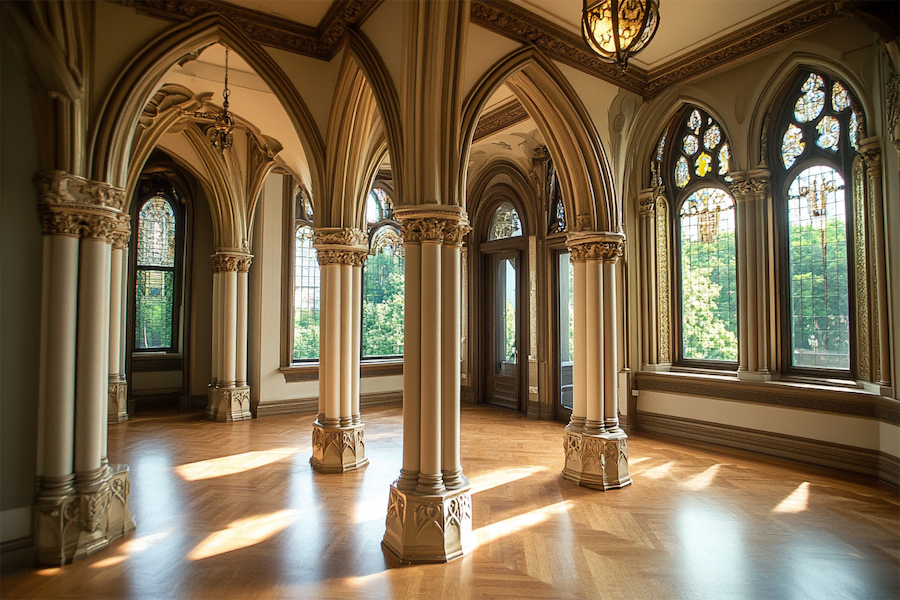Neo-Gothic architecture, also known as Gothic Revival, emerged in the late 18th and early 19th centuries as a reaction against the neoclassical styles prevalent at the time. This movement sought to revive medieval Gothic architectural elements, emphasizing verticality, intricate ornamentation, and a sense of grandeur.
History and Origins of Neo-Gothic Revival Columns
The Gothic Revival movement began in England during the 1740s, inspired by a renewed interest in medieval architecture. Architects and designers aimed to evoke the spiritual and romantic qualities of the Gothic era, leading to the incorporation of characteristic elements such as pointed arches, ribbed vaults, and flying buttresses.
Columns played a significant role in this revival, serving both structural and decorative purposes.
Key Features of Neo-Gothic Revival Columns
Neo-Gothic columns are distinguished by several defining characteristics:
- Pointed Arches: Columns often support pointed arches, a hallmark of Gothic architecture, which directs weight downwards and allows for taller and more slender structures.
- Clustered Columns: To enhance the impression of height and complexity, multiple slender columns are grouped together, creating a clustered effect that adds to the intricate aesthetic.
- Ornate Capitals: The tops of columns, or capitals, are frequently adorned with detailed carvings of foliage, figures, or heraldic symbols, reflecting the craftsmanship of the medieval period.
- Vertical Emphasis: The overall design of Neo-Gothic columns accentuates vertical lines, contributing to the soaring and uplifting feel of the architecture.
Applications of Neo-Gothic Revival Columns
Neo-Gothic columns were utilized in various types of structures, including:
- Religious Buildings: Churches and cathedrals adopted Neo-Gothic columns to convey spiritual aspiration and grandeur, as seen in the Sint-Petrus-en-Pauluskerk in Ostend, Belgium.
- Academic Institutions: Universities and colleges incorporated Neo-Gothic elements to evoke tradition and prestige, with columns featuring prominently in their halls and libraries.
- Residential Architecture: Some residential buildings embraced the Neo-Gothic style, using decorative columns to add a sense of elegance and historical reference.
Considerations When Choosing Neo-Gothic Revival Columns
When selecting Neo-Gothic columns for a project, consider the following:
- Material Authenticity: Traditional materials like stone or wood can enhance the historical accuracy and aesthetic appeal of the columns.
- Craftsmanship: The intricate designs require skilled artisans to execute the detailed carvings and motifs characteristic of Neo-Gothic columns.
- Structural Integration: Ensure that the columns not only serve a decorative purpose but also align with the structural needs of the building, maintaining both form and function.
Conclusion
Neo-Gothic Revival columns are integral elements that encapsulate the essence of the Gothic Revival movement. Their distinctive features and applications across various building types underscore their versatility and enduring appeal in architectural design.
